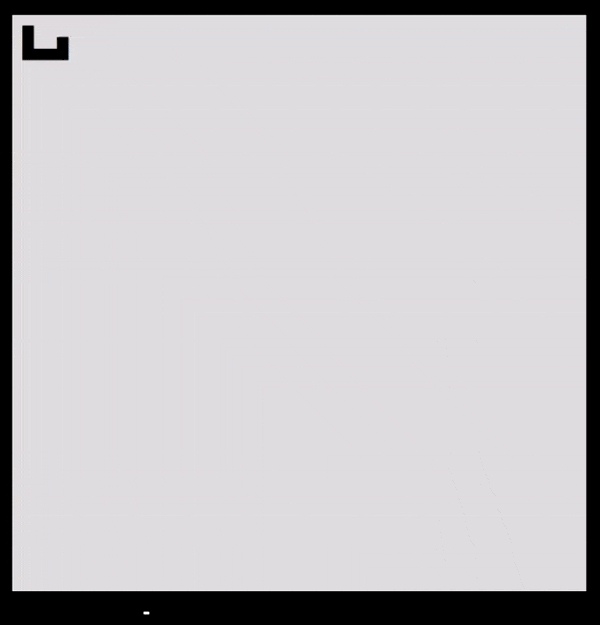
The gif above shows my maze generation and pathfinding algorithm I wrote for my Ascii Raycaster Game (C++). This project proved to be a fruitful exploration of recursive algorithms, maze generation, and pathfinding.
I explored many different forms of maze generation, but ultimately decided on a form of recursive backtracking.
The trickiest part of this generation is that I wanted the spaces that walls and paths use to be permeable in regard to the same grid. Basically, I wanted a single 2D vector to contain the entire maze, and for it to be feasible for paths and walls to exist on any single coordinate. I wanted this both for the convienence of the single vector that holds the whole map, and because I wanted the walls to be the same thickness as the paths.

Note that if you compare this generation to the one at the start of this article, there are far less walls connecting to eachother. That is because in this implementation, before placing a pathway, it looks 2 nodes deep to ensure there are only untouched walls ahead. This prevents walls from connecting to previously generated walls (for the most-part at least, you can spot some buggy loops in the gif above). This makes a much more traditional maze, but it was not ideal for gameplay.
I went with a wall depth of 1 as that yielded the most interconnectedness. Note how often the path generated using a wall depth of 2 is long and windy, giving the player few options for exploration, and even fewer options for escape from monsters. A wall depth of 1 provides plenty of paths for the player to use, and plenty of avenues for monsters to sneak up on them.
The pathfinding uses a very simple version of flood-fill with depth-first-search. This is because the pathfinding is, in part, recycled from code using to generate the maze. The algorithm works as such:
FUNCTION labelNodes(position, stepsTaken)
SET node[position]'s distance to stepsTaken
SET openDirections to north, south, east, west
FOR each direction in openDirections
IF direction is open AND it's distance is greater than stepsTaken + 1 THEN
labelNodes(position + direction, stepsTaken + 1)
END IF
END FOR
END FUNCTION
After the distances of all of the nodes are labelled, the nodes are followed from high-to-low to reach the goal.
This algorithm is guaranteed to find the shortest path to the objective. It is also guaranteed to mark absolutely every single open pathway node with its correct distance from the objective - regardless of how far out-of-the-way that is. A solution with 20 steps could have already been found, and the algorithm could continue searching and storing distances thousands of times larger.
In the context of my game, map size, and PC specs, this has not proved to be a problem peformance-wise (even when calling this algorithm 30 times every second - all on its own thread of course).
I don't intend on posting the code for this project, as it was nothing but a fun exploration that I learned a lot from. The lessons I learned in this project did wind up being used in some of my other projects that do have publicly available code including my Fast Random Pathfinder (C++) and my Dynamic Sudoku Solver (Rust).